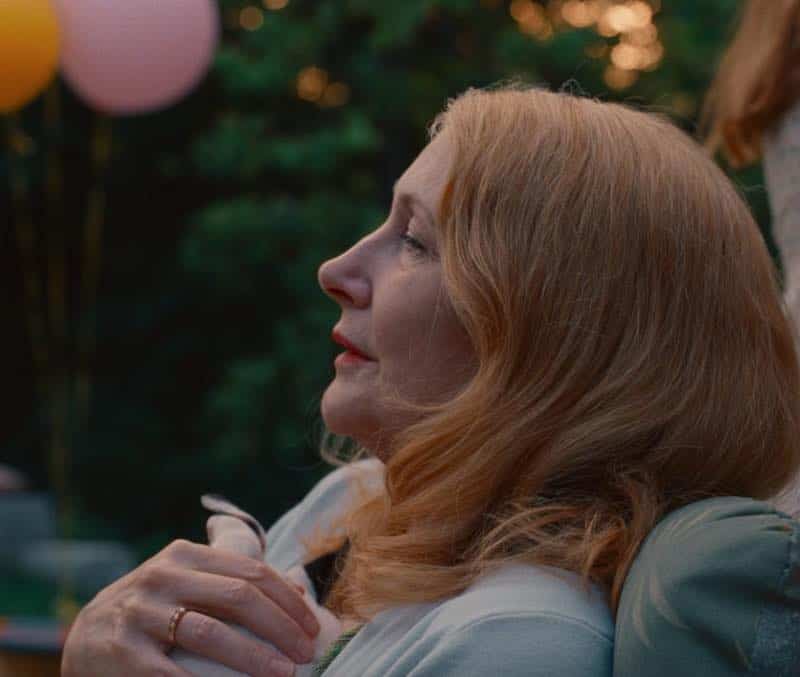Monica sets itself apart in a couple of ways. It stars Trace Lysette in a rare leading role for a transgender actor. I watched the film precisely because I wanted to support a film that centered around a trans character. Monica also differs because of its artistic choices and look.
Let me comment on the look first. The film was shot in an almost square format. The effect was disconcerting to me because heads and body parts that should have been in a shot were always falling out of the frame. There were few intimate close ups and lots of glancing looks, profiles, and backs of heads. Rather than seeing people close up, we often saw reflections instead. I’m sure it was done to emphasize how disconnected Monica was from her family. It certainly succeeded in that regard because I longed for the intimacy as Monica must have.
Monica was co-written and directed by Andrea Pallaoro.
Moving on to the story, always the reason for watching. Monica (Trace Lysette) lives far from her family and hasn’t seen them in years. She gets a call from Laura (Emily Browning), her sister–in-law, saying her mother is dying and they need her back at home.
She goes. It’s a two day drive and she’s reluctant to go. She’s nervous about seeing her family. Her parents rejected her. The first person she sees there is Laura, who has three young sons. Laura is warm and welcoming.
Laura takes her to her mother’s house where Monica meets Leticia (Adriana Barraza), her mother’s caregiver. Leticia is also warm and welcoming.

She goes upstairs to greet her mother (Patricia Clarkson), who doesn’t recognize her. Her mother doesn’t want a stranger taking care of her and wants Monica to leave. After this blow, Monica meets her brother Paul (Joshua Close). His first words are, “I would never have recognized you.” Another blow. However, Paul is glad to see her and ready to reconnect.
The story progresses through a series of small moments. Monica bonding with her nephews, sharing with her brother. She wanted to connect to her mother but it wasn’t easy. Patricia Clarkson is brilliant as always and great at being terminally ill. There were moments when it felt like her mother knew who Monica was, but she refused to say the words out loud.

There were glimpses of connection. Once when Monica was helping her mother put on makeup before going to see a grandchild perform at a school program. Once when helping her mother bathe. But there were also hard moments when she almost left.
We had glimpses into Monica’s multifaceted personality. She apparently earned her living as a masseuse and sex worker. She was broken hearted over someone named Jimmy who rejected her. For as withdrawn and timid as she was around her family, she could stand up for herself forcefully away from them.
The film was slow and subtle. It emphasized the longing for acceptance, the fragile bonds of family, and the inevitability of dying. The story didn’t so much end as simply stop while there was still some hope of reconciliation between a dying mother and her trans child.
The film is streaming on AMC+.

Leave a Reply